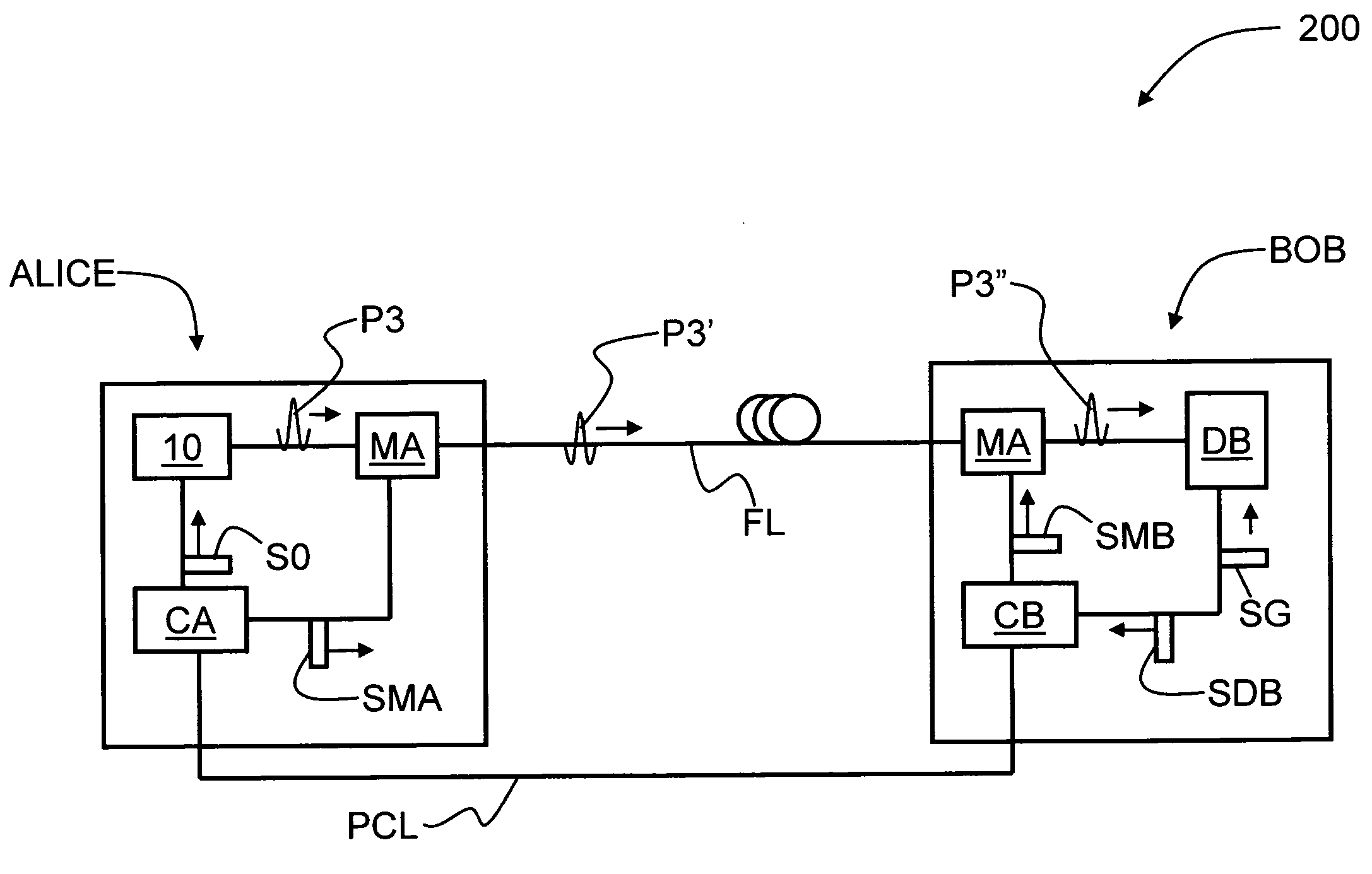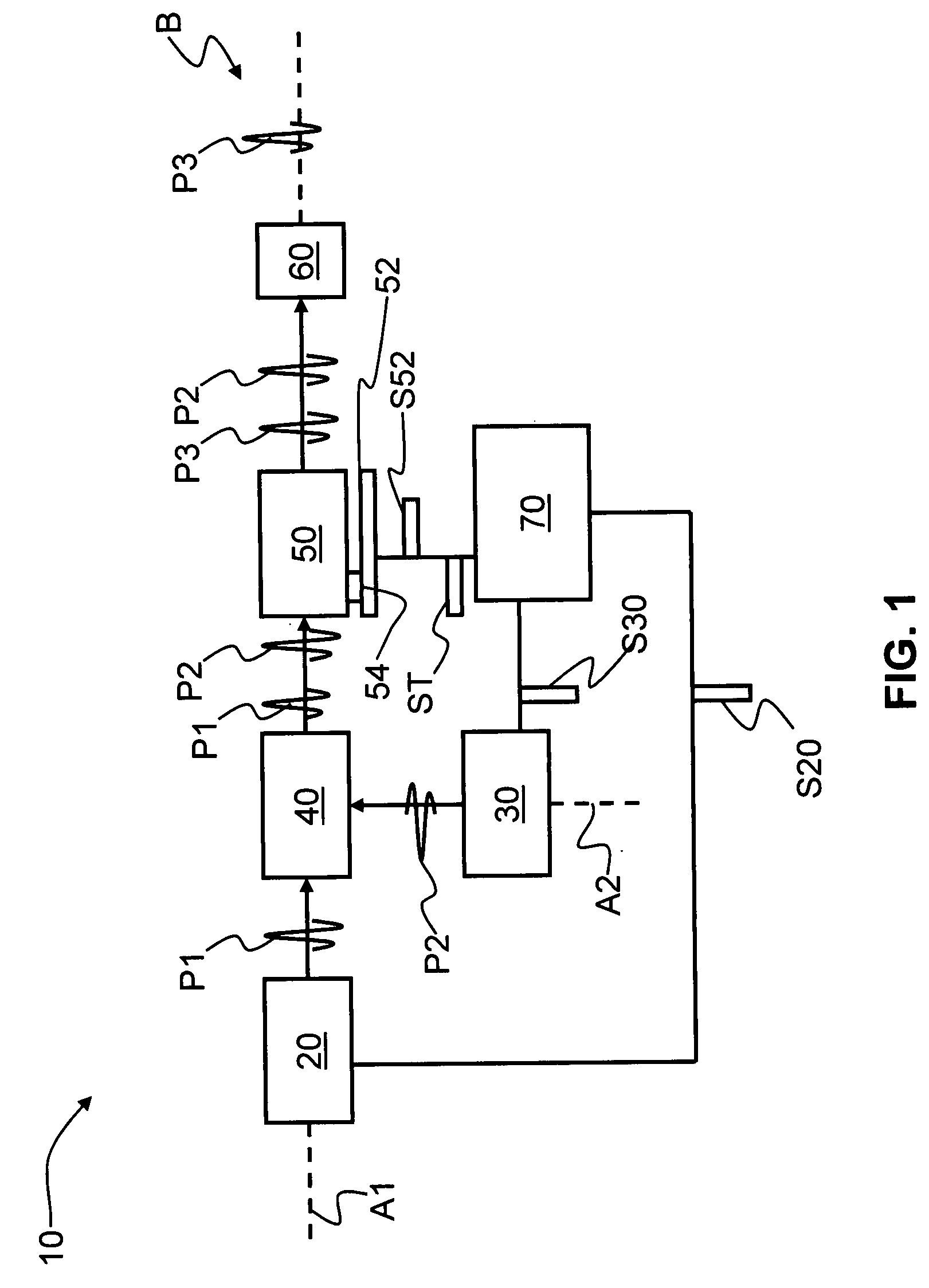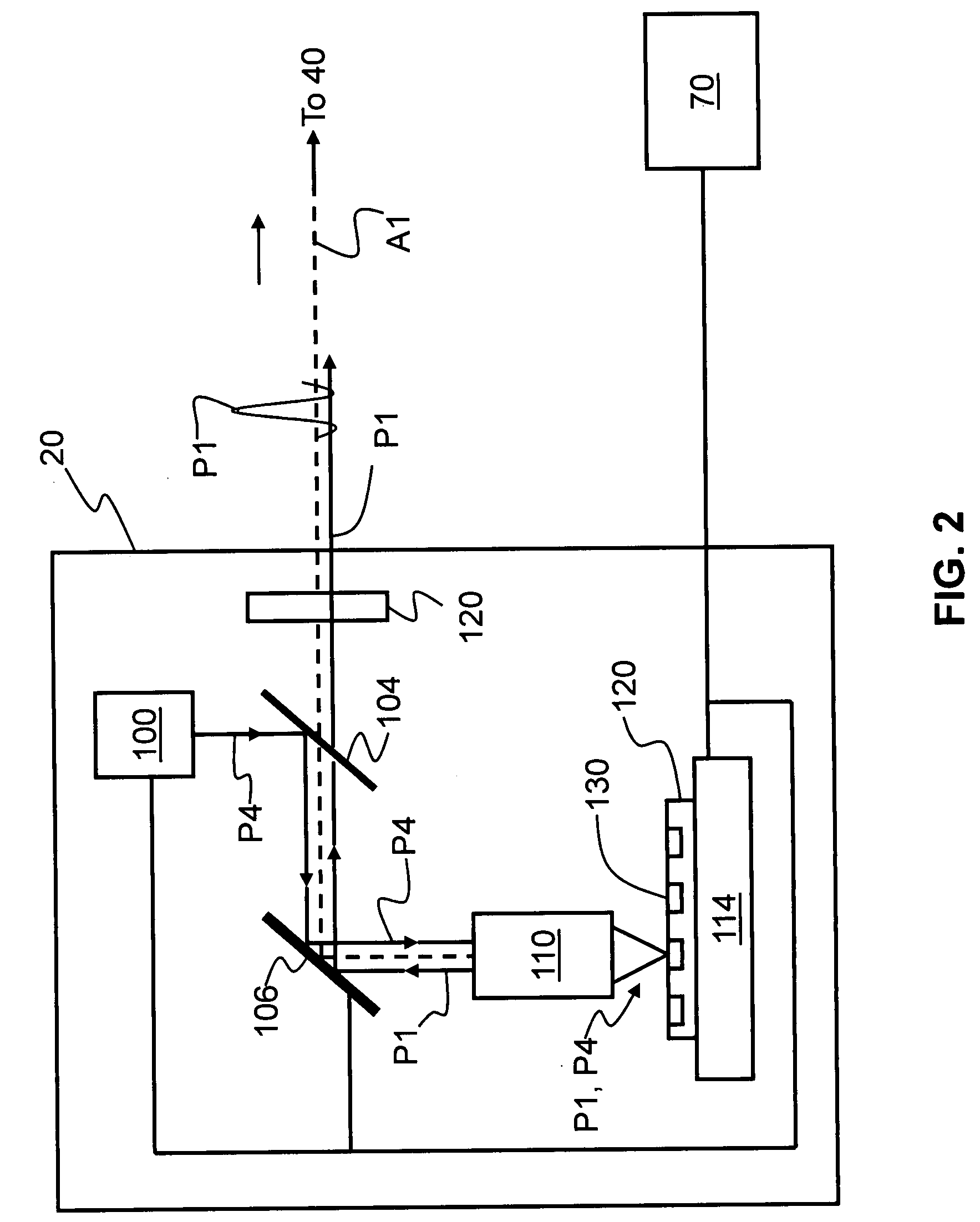Diamond nanocrystal single-photon source with wavelength converter
a technology of nanocrystals and wavelength converters, applied in the field of single-photon sources, can solve the problems of small background light, insubstantial refraction effect, and reducing the quantum security or quantum computing effect of true single-photon pulses
- Summary
- Abstract
- Description
- Claims
- Application Information
AI Technical Summary
Benefits of technology
Problems solved by technology
Method used
Image
Examples
Embodiment Construction
[0015]FIG. 1 is schematic diagram of an example embodiment of a single-photon source (SPS) 10 according to the present invention. SPS 10 includes an optical axis A1. Arranged along optical axis A1 is a color-centered (e.g., NV or NE8) diamond nanocrystal (CCDN) SPS 20 that generates single photons P1 having a wavelength λ1. Single photons P1 are referred to herein as “input photons” for reasons that will become apparent from the discussion below. In an example embodiment, input photons P1 from the NV center have a wavelength λ1˜637 nm.
[0016]SPS 10 further includes a pump light source 30 arranged along a second optical axis A2 that intersects optical axis A1. Pump light source 30 emits pump light (photons) P2 at a wavelength λ2. In an example embodiment, λ2˜1080 nm. Other pump wavelengths may be used depending on the input photon wavelength λ1 and the output photon wavelength λ3, as explained below. In an example embodiment, pump light source 30 is or includes a Nd:YAG laser, a GaAs ...
PUM
 Login to View More
Login to View More Abstract
Description
Claims
Application Information
 Login to View More
Login to View More - R&D
- Intellectual Property
- Life Sciences
- Materials
- Tech Scout
- Unparalleled Data Quality
- Higher Quality Content
- 60% Fewer Hallucinations
Browse by: Latest US Patents, China's latest patents, Technical Efficacy Thesaurus, Application Domain, Technology Topic, Popular Technical Reports.
© 2025 PatSnap. All rights reserved.Legal|Privacy policy|Modern Slavery Act Transparency Statement|Sitemap|About US| Contact US: help@patsnap.com



